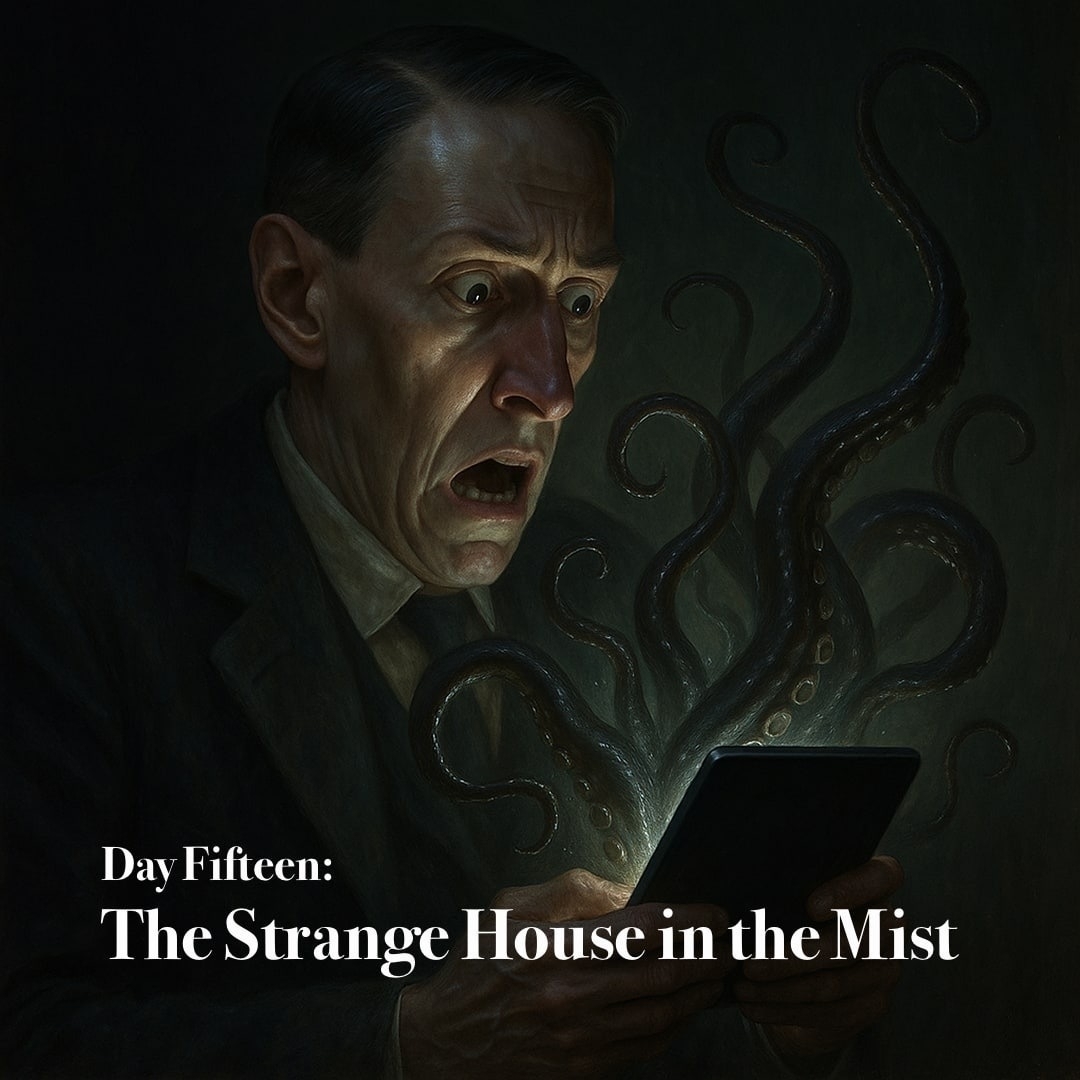The Strange House in the Mist

In those dim and formative years of my literary wanderings, I first beheld the dread artistry of H. P. Lovecraft through a volume most curious—The Best of H. P. Lovecraft: Bloodcurdling Tales of Horror and the Macabre, its cover adorned by the ineffable hand of Michael Whelan, and issued by the house of Del Rey and Ballantine. Within those pages, the shadows stirred and whispered, and from their eldritch call I could not turn away. Soon after, as if compelled by some unseen cosmic hand, I acquired further grim tomes—The Tomb and Other Tales, The Dream-Quest of Unknown Kadath, and The Case of Charles Dexter Ward—each a gateway to realms of impossible antiquity and madness.
For many years, those books were the whole of my acquaintance with Lovecraft’s dark scripture. Yet in the waning light of the last year, curiosity drove me again to the abyss: I downloaded The Complete Works of H. P. Lovecraft to my Kindle, and there, amid that vast electronic tome, I found tales both familiar and strange. One in particular, “The Strange House in the Mist,” had eluded my earlier readings. Many speak of it with reverence, yet to me it seemed an echo without power, a relic of dream rather than of nightmare. Still, I would not deny others their enchantment; for who can say which tales the unseen gods of our subconscious will claim as their own, or which cup of tentacled tea may taste sweet upon another’s tongue?
In the eldritch town of Kingsport there looms a house of unspeakable antiquity, perched high upon a crag that gazes out over the boundless sea. Toward this dread and mist-wreathed dwelling came Thomas Olney, a humble philosopher, whose soul was stirred by whispers older than memory. With great peril he scaled the sheer precipice and beheld the enigmatic master of that abode, whose only portal yawned upon vapors and abyss. There, amidst archaic lore and unearthly visitants, Olney partook of mysteries beyond mortal ken. When he returned to Kingsport, he walked as though hollowed, his mortal shell intact yet his spirit lingering forever in that supernal house above the mists.
Lovecraft, inspired by Lord Dunsany’s Chronicles of Rodriguez and the looming headland of Mother Ann in Massachusetts, penned this spectral vision. Though first rejected by Weird Tales in 1927 and later promised to The Recluse, fate delayed its unveiling until 1929, when Weird Tales at last accepted it, granting Lovecraft a meagre fifty-five dollars. In after years, critic Robert A. W. Lowndes hailed “The Strange High House in the Mist” as one of the master’s most haunting and consummate tales.